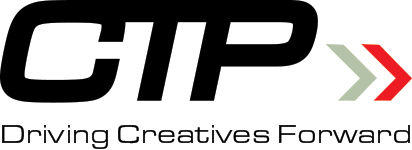Three Key Things to Consider
Before Starting a Side Business
- Bootstrapping
- Customers
- Marketing
- Learning How to Sell
- Starting a Business
- Team
- Writing
- Workshop for Graphic Designers
6 Steps to Grow Your Email House List with Aweber
The Power of Marketing Automation
Own Your Marketing Platform: Build Your Marketing Engine
How and Why to Discover Your USP Unique Selling Proposition
Why Clickfunnels is so important for Creative Professionals
Sales Funnels How and Why to Get Into the Game
Deciding to start a side business is always an exciting endeavor. However, it can also be overwhelming. Here are three considerations to get you headed in the right direction.
 Your desire to open a side business has most likely been fueled by that great idea you can’t get out of your head. Or, maybe it’s been initiated by a desire to achieve more financial freedom. It could also be spurred by the feeling of independence that comes from being your own boss. Whatever the reason, the desire to carve your own path and open a side business will take your life in an exciting new direction. This path usually begins with an understanding of entrepreneurship.
Your desire to open a side business has most likely been fueled by that great idea you can’t get out of your head. Or, maybe it’s been initiated by a desire to achieve more financial freedom. It could also be spurred by the feeling of independence that comes from being your own boss. Whatever the reason, the desire to carve your own path and open a side business will take your life in an exciting new direction. This path usually begins with an understanding of entrepreneurship.
And just like a finely tuned racing team, in business you need to do solid research, be detailed in your preparation, and have all your nuts and bolts tightened before ever reaching the starting line. That way, when the flag drops, your new side business will be off to the races.
As a business owner, there are new skills to understand and master. To start with the foundational concepts, we should begin by understanding different types of business structures.
As each business structure has different legal and tax implications, it’s important to choose one that offers the most benefits to your side business.
1. Business Structure
The most common forms of business ownership structures are a sole proprietor, partnership, limited liability corporation, corporation, and cooperative.
Sole Proprietor
In a sole proprietorship, you are solely responsible for the business assets and liabilities. This is the simplest structure, where a single person owns the business. As a sole proprietor, the owner gets all the profits but also takes all the losses. When income is received in a sole proprietorship, it is recorded under personal income tax.
Pros: Easy and inexpensive business structure to get you up and running right away. It offers complete control and a simplified tax solution.
Cons: Personal liability is high. Fundraising may be difficult. You alone are responsible for success or failure of business.
 Partnership
Partnership
A partnership is a type of business where two or more people own and run a business together. When setting up a partnership, it’s important to determine how much ownership each partner gets and how profits will be shared. This information can be detailed in the capitalization tables and outlined in a partnership agreement.
Pros: Easy and inexpensive to get up and running, shared financial commitment, the benefits of complimentary skill sets, and more incentive for employees to become partners.
Cons: All partners are financially liable, disagreements among partners can arise, and profits must be shared.
Limited Liability Company, LLC
With a limited liability company (LLC), you get the tax benefits of a corporation and the flexibility of a partnership. In an LLC the business structure protects the owner’s personal assets and provides protection against personal liability.
LLC’s are one of the most common forms of business ownership as they have great tax flexibility, less paperwork, and limitless ownership.
Pros: Limited liability, less recordkeeping and profit sharing advantages.
Cons: Limited life entity – members leaviing LLC may cause termination. Members must also pay self-employment taxes for Medicare and Social Security.
Corporation
A corporation is a legal entity owned by its shareholders. Registering a business as a corporation requires costly administration, legal and tax fees. Because of this, corporations are suggested for larger, more established companies.
There are two main types of corporations – C- Corporations and S-Corporations. The main difference between the two is how they are taxed.
C-Corporations are taxed on the corporation’s net income and when shareholder profits are distributed. In an S-Corporation, income is passed through to shareholders who then report income or loss on their own tax returns.
Pros: Limited liability, good fundraising capacity, corporate tax rates and ability to attract good employees.
Cons: Costly to start, time-consuming, double taxation and lots of paperwork required to incorporate.
 Cooperative
Cooperative
A cooperative business formation is set up as a member-owned structure and requires a minimum of five participants. Each of the members is given equal voting rights, regardless of their level of investment.
Cooperatives are typically set up as social service type business. They often promote a philosophy of mutual help from all members.
The formation of a cooperative is different than any other business structure. To set up a cooperative, a group of people must agree on a common need for the business. Then a committee holds meetings, surveys and performs cost analyses studies before a final business plan is agreed upon.
Pros: Lower taxation, funding opportunities through grant programs, strength in numbers, flexible business structure and democratic management philosophy.
Cons: Fundraising challenges due to the “one member-one vote system” and potential problems with member participation.
Final Thoughts On Choosing a Business Structures
In general, a sole proprietorship, partnership, or limited liability company is the most typical structure for someone who’s just getting started on a side business.
However, based on your needs and long-term organizational goals, a corporation or cooperative may also be a good fit.
To be fully infor med, you should always seek out professional advice before setting up your business. A certified public accountant (CPA) or lawyer can help you determine which type of ownership structure will be best.
Do you now have an idea of which business structure will be the right fit for your new side business? Great!
Now comes the fun part – developing the product offering, marketing it to your target customers, and closing your first sale.
But wait…what about production fees, marketing budgets, and operational costs. In order to reach the starting line, you must first build a vehicle to get you there.
For many prospective business owners, this is where the rubber meets the road – funding.
Don’t worry. There’s no reason to be intimidated. An initial capital outlay is a normal part of the formation process. It’s the next important step to kick your side business into high gear.
 2. Initial Capital Outlay
2. Initial Capital Outlay
Starting a business is going to require an investment of both time and money. You can choose to bootstrap your side business or look for outside capital. A capital outlay is money you will spend on a fixed asset, such as property, plant, and/or equipment.
You can’t have a race without a track, much like you can’t start your business without a place to work and produce your product.
Take some time to work the numbers and determine if your initial capital outlay is something you are
comfortable with. If you have a partner, you will want to create a capitalization table, which lays out
ownership percentages.
Ok, you’ve got an understanding of the business structure and an idea of the initial capital outlay. You’re
getting closer to the big race.
But, before the green flag waves and you can no longer turn back, you better have a good plan. Like any good racing team, you need to know where you’re headed. You must be able to anticipate the challenges
of the track ad avoid major accidents whenever possible.
In the next phase of your plan, you will setup the primary functions of your side business.
3. Business Functions
All businesses rely on two major functions – marketing and production – and the two are mutually dependent. Marketing is the process of generating awareness and driving sales of your product or service. Production is the creation of that product or service.
However, in addition to marketing and production, you must also have the following business functions covered:
- Finance – This is the lifeblood of the organization. You must be able to plan, procure and effectively utilize the business funds to steer the business forward.
- Personnel – This is the human aspect of your business. It involves the procurement, development, and maintenance of the workforce.
- Operations – The business must be managed through a number of processes and systems in order to run efficiently.
Think carefully about each of these business functions and how they relate to your side business. Each function has basic guidelines but should be tailored to your specific business structure, industry, and, whether you are selling goods or services.
Once you feel comfortable with the first three steps, shift gears and start developing a business plan. It will help you define your company values and lay the groundwork for growth.
Use this plan to outline your business description, marketing strategies, operations, management structure, and finances.
These steps may seem daunting, but there are many positive things to consider. This side business is something you have always dreamed about doing. If you determine that the benefits outweigh the risks, then its time to get started.
By continuing to work your full-time job while growing a business, you will have the funds, time, and benefit of working at your own pace.
Remember, starting small is fine. It gives you the opportunity to test the waters with your new product. And before you know it, you’ll be creeping up on your competitors, building the stamina necessary to meet them at the finish line.
 Author: Logan Chierotti
Author: Logan Chierotti
Logan Chierotti is an online entrepreneur and digital marketing expert. By age 33 he had sold three companies one of which ranked No. 513 on the Inc. 5000 list of fastest-growing private companies in the U.S. in 2015. Chierotti is a master copywriter for DirectResponseCopywriting.com and a principal at Bizsold.com.
Disclosure: I am an independent ClickFunnels Affiliate, not an employee. I receive referral payments from ClickFunnels. The opinions expressed here are my own and are not official statements of ClickFunnels or its parent company, Etison LLC.


 Partnership
Partnership Cooperative
Cooperative 2. Initial Capital Outlay
2. Initial Capital Outlay Author: Logan Chierotti
Author: Logan Chierotti